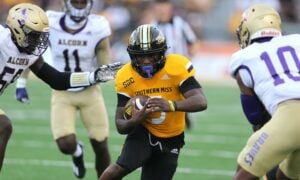Stefon Diggs: A Truly Elite Wide Receiver
Since entering the league in 2015, Stefon Diggs has been a focal point in the Vikings’ offense. His crisp route running has drawn praise from scouts and analysts alike, and he has had several breakout moments – the most famous (of course) being his walk-off touchdown during the NFL playoffs at the Superdome in 2017.
Counterpart Adam Thielen has been one of the best feel-good stories in the league over the past few seasons as an undrafted wide receiver-turned-stud, but dynasty owners need to hone in on Diggs as a top-tier dynasty asset as well. His first 1,000-yard season finally came with Kirk Cousins under center last season, but let’s dig in and see why 1) this won’t be his last and 2) why Diggs compares favorably among the all-time great wide receivers in NFL history.
PART ONE: NFL PRODUCTION
Whether securing first downs, earning extra yards after the catch, or leaving cornerbacks in the dust with his 4.46 speed, Diggs can get open in a variety of ways. Using a database I created detailing player production over time, you can see Diggs has only gotten better as he gains more experience.
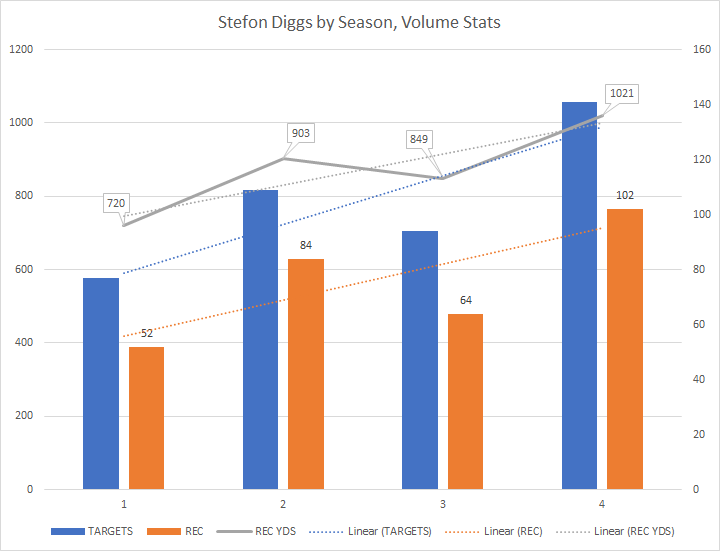
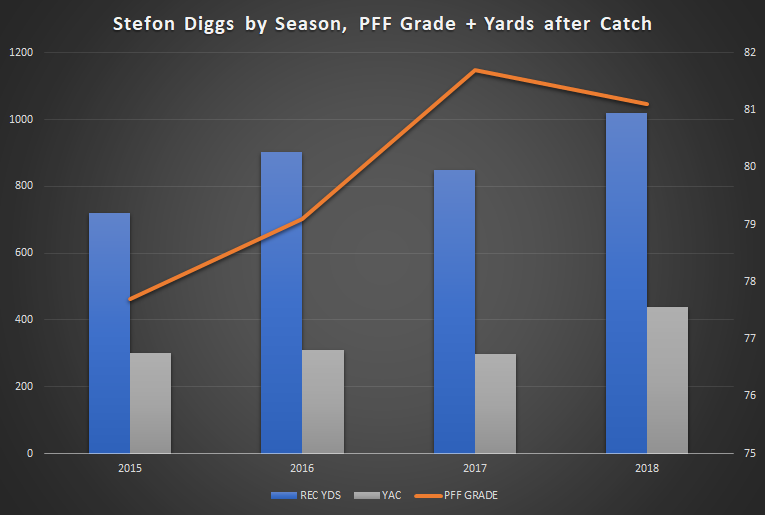
Diggs’ career began as a slot dominator during his first two seasons with Sam Bradford, but head coach Mike Zimmer shifted Thielen to the primary slot role entering 2017. This move truly allows both players to maximize their potential given their natural skill sets, as Diggs is an exceptionally polished route runner and Thielen is a big-bodied slot presence with great hands.
When comparing Diggs’ past production to some of the all-time greats in the Pro Football Focus era (since 2009), he is one of just six wide receivers to earn a PFF grade of 80+ in total grade, route running grade, hands (drop) grade, and fumble grade!

When analyzing Diggs’ elite route running and sure-handedness in terms of missed tackles forced, yards earned after the catch, and total drop percentage, he ranks top 15 in each – joining Michael Thomas, Antonio Brown, and Larry Fitzgerald.
When looking at all three historical charts, only Stefon Diggs and Antonio Brown are found on all three. Stefon Diggs is truly an elite wide receiver.

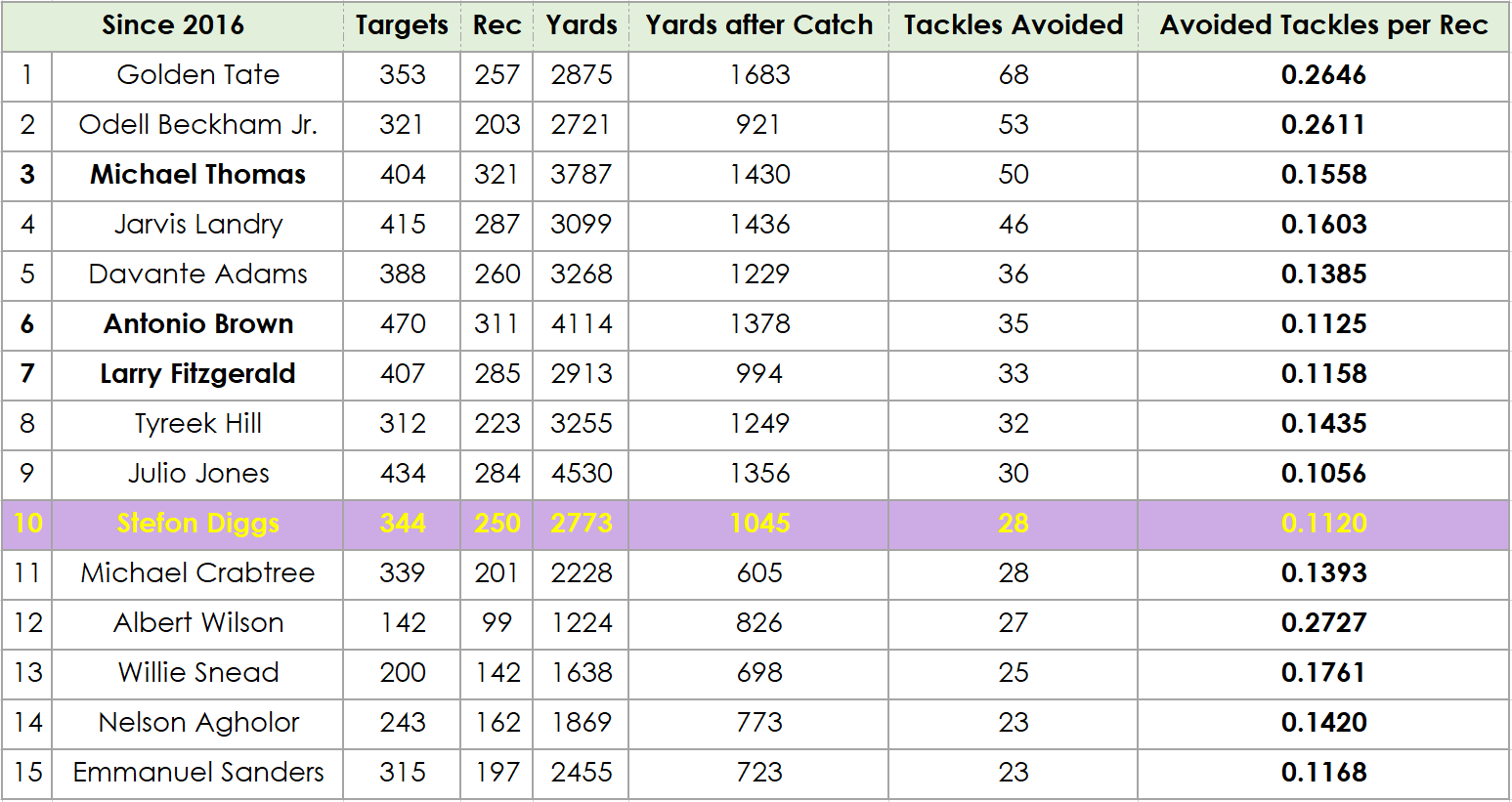
PART TWO: THE QUARTERBACK
Now that we have proven Diggs’ status as a top-tier wide receiver, his upside can only be elevated to the level of his quarterback play. Enter, Kirk Cousins.
Despite what disgruntled Vikings fan love to say, Cousins is among the most accurate quarterbacks in the league and has done phenomenally well considering the offensive lines he has played behind in both Washington and Minnesota. The positive news is that in just his first season under Zimmer’s system, nearly all his career averages rose in 2018.
The advanced metrics show Cousins’ above-average ability to make good throws when under pressure, making him one of the best playmakers in any given scenario. Per PFF, even with a bottom-five line, Cousins ranked second in adjusted completion percentage (behind Drew Brees) and fourth in uncatchable throw rate in 2018.


Stats via Pro Football Reference.
As Cousins settles into his second year with the Vikings, Minnesota pass catchers should feel even more confident in Captain Kirk, especially with a re-tooled offensive line. Pat Eflein was PFF’s 38th graded center in 2018 out of 32 teams, after all!
Thankfully, first-round pick Garrett Bradbury out of NC State should bring a dominating presence to this front five and give Cousins more time to establish himself with the plethora of weapons surrounding him as well, especially Diggs on the perimeter.

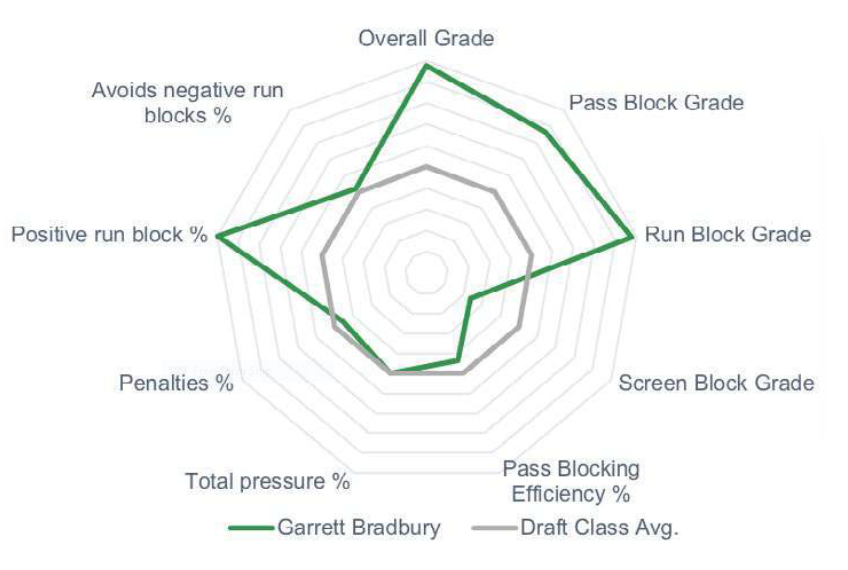
Both PFF Player Grades and College Scouting tools can be found by purchasing PFF Edge.
Wrapping up our look into Cousins’ viability as an offensive force, we should observe how he performs when under the most pressure, to see who his chemistry and trust lie in most. Once again, we find more reasons to believe in Diggs.
When Cousins faces the most pressure from broken plays, we can see he looks to Diggs first. Kirk’s career “Bad Ball %” (a metric I termed to show how many incomplete passes were more the quarterback’s fault, without being deemed an uncatchable pass) is just 22.9%, and I fully expect this number to regress in Diggs’ favor next season as he receives a higher quality of targets and Kirk gets a little more time in the pocket.
Despite finally reaching the 1,000-yard mark in 2018, I truly believe Cousins left close to 500 extra yards out there for Diggs from rushed/off-balance attempts.

PART THREE: THE OFFENSIVE SCHEME
In week 14 of last season, Kevin Stefanski replaced John DeFilippo as the Vikings’ offensive coordinator. While the Vikings ended the season 2-1, Cousins averaged just 234 yards/game against the Lions and Dolphins, with a meager 243 total receiving yards going to Diggs and Thielen combined over the final three weeks.
As a result, the fantasy community has been widely concerned about Stefanski’s ideal offense for months, posting gloomy projections as to how it affects Diggs/Thielen/Dalvin Cook moving forward. Thankfully, a deeper look into the stats paints a better picture!
One thing the fantasy community fails to recognize about the aggregate stats under Stefanski is that the Vikings got out to a huge early lead against the Dolphins, which allowed them to take their foot off the gas for a majority of the game. When only observing plays that occurred over the final three weeks when the score was within 14 points, the Vikings offense proves to be much more fantasy-friendly than the box score implies:
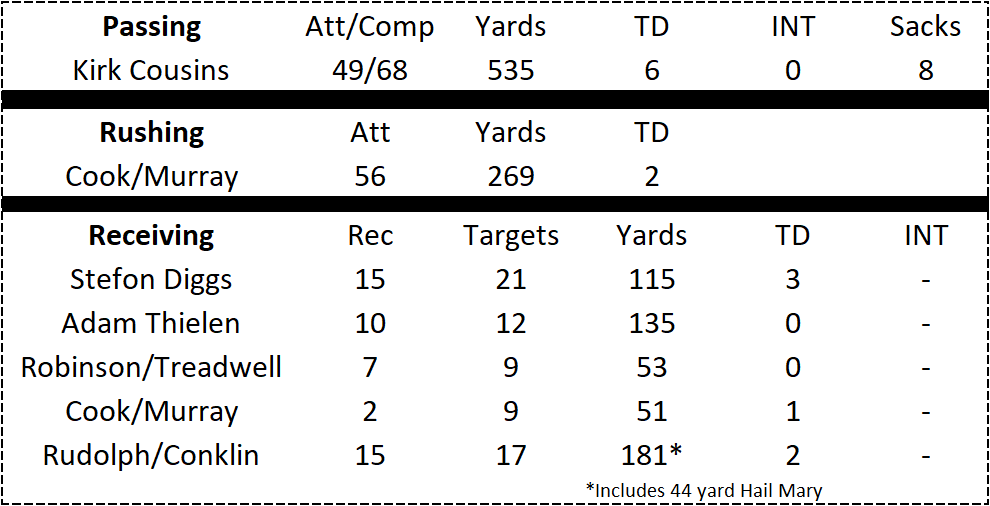
Additionally, I split out these stats over red zone snaps only, to see how we can expect touchdown distribution heading into next season:

As you can see, Stefanski’s offense still favors the pass, and promotes an up-tempo offense built on shorter, reliable throws that help continually move the sticks. For a receiver like Diggs (who had the least time from the snap to reception (2.41s) and still earned 438 yards after the catch), both his target volume and red zone usage in this sample sign indicate great things for Diggs in 2019.
Secondly, reasoning as to Stefanski’s play-calling by week could very well be that he is just an extremely bright offensive mind. When comparing positional performance over weeks 15-17, it’s clear that Stefanski is not bound to give the same players the same workload every single week, like some outdated, predictable offensive coordinators have done in the past.
Using Sharp Football Analysis data on defensive efficiency/success rate by position, it appears Stefanski is great at exploiting each team’s specific weakness:
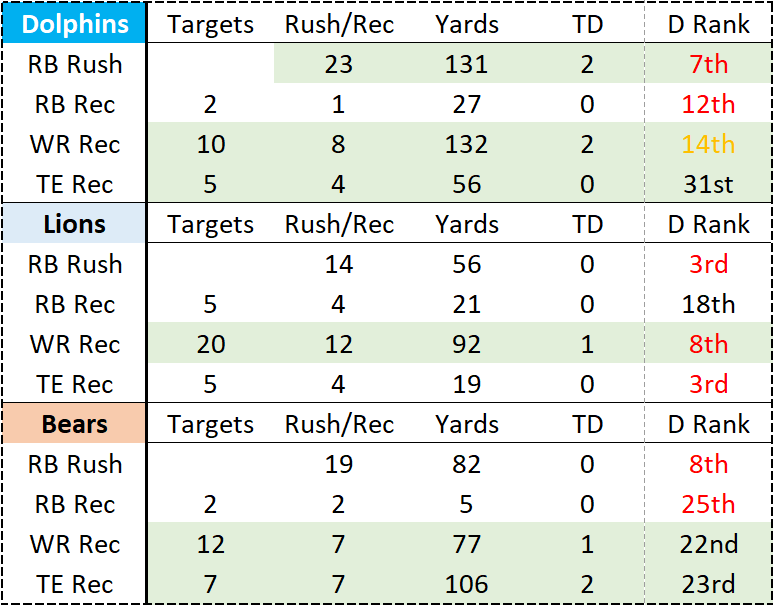
If this truly is the case, then it would be wise to look forward to 2019 and observe the Vikings’ strength of schedule to see where our expectations should be highest…
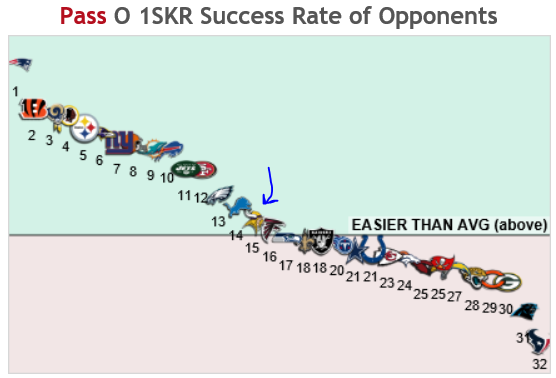
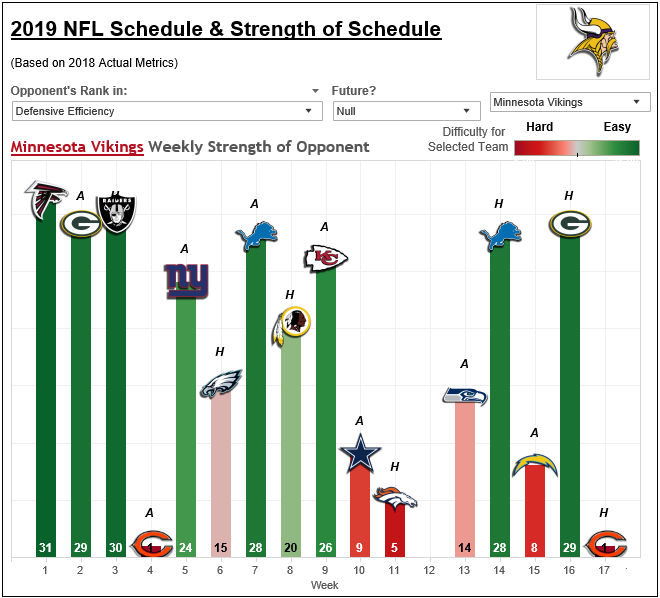

Courtesy of Sharp Football Analysis.
Clearly, Vikings fans should have higher expectations for their passing game in 2019, while their rushing strength of schedule is the hardest in the league. While this means great things for Diggs, those who have Dalvin Cook rostered should have a legitimate concern about this heading into next season.
PART FOUR: IN CONCLUSION
I know I threw a lot at you in this latest article, but all-in-all I believe Stefon Diggs is absolutely primed for a break-out season in all three aspects: the player, the quarterback, and the offense itself. He has never had all three of these factors line up as perfectly as they do heading into 2019, which makes me looking to acquire exactly 100% of him in every dynasty league I take part in.
While I believe his ADP is correctly priced as a late second round startup pick (WR11), I’m willing to pay even value to obtain all the shares of a player this game-changing.

My custom-built player projections foresee career-high stats for Diggs next season, and these numbers are purely a baseline. I can easily see Diggs breaking out for 100+ receptions and 1,200+ yards, while also maintaining a high red zone presence in Stefanski’s offense.
Diggs is in year two of a lucrative five-year, $72m contract extension, and I think he is the perfect wide receiver to target this off-season in the high-WR2 price range with an extremely possibly chance he finishes among the top five by the end of the season.

I hope you find this article helpful heading into the most fun part of the dynasty off-season and became more knowledgeable in the process. Feel free to follow me @RyanMillerNFL for daily Twitter threads and in-depth player content as seen here!
- IDP Waiver Wire: Week 17 - December 28, 2020
- IDP Waiver Wire: Week 16 - December 21, 2020
- IDP Waiver Wire: Week 15 - December 15, 2020









